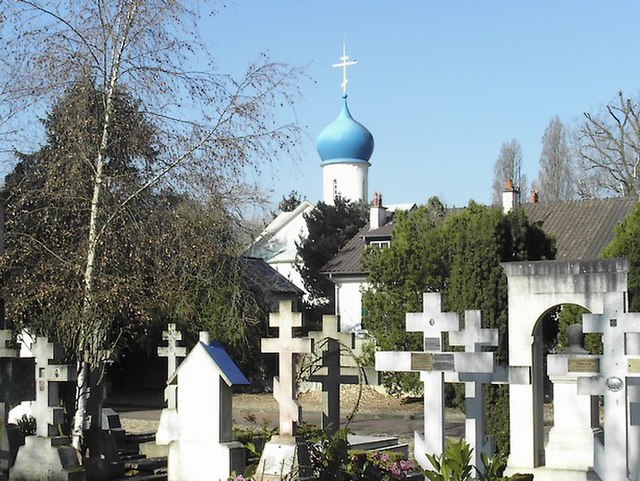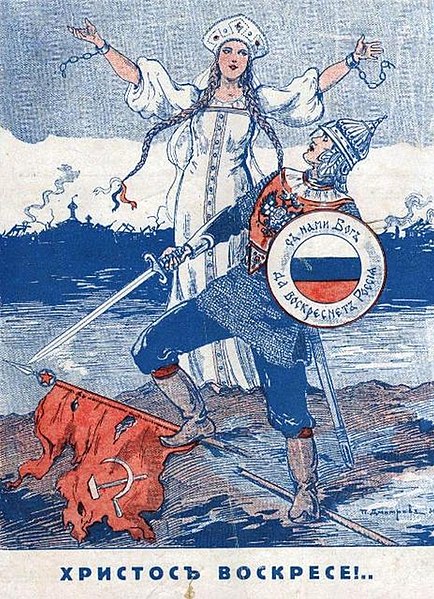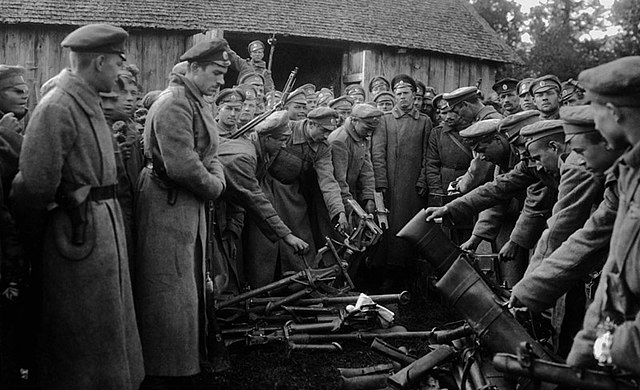White Russian émigrés were Russians who emigrated from the territory of the former Russian Empire in the wake of the Russian Revolution (1917) and Russian Civil War (1917–1923), and who were in opposition to the revolutionary Bolshevik communist Russian political climate. Many White Russian émigrés participated in the White movement or supported it. The term is often broadly applied to anyone who may have left the country due to the change in regimes.
Sainte-Geneviève-des-Bois Russian Cemetery in Sainte-Geneviève-des-Bois, Essonne, France, near Paris, is a necropolis of White Russians.
White propaganda poster, c. 1932; the text at the bottom, in Church Slavonic, reads "Christ Is Risen!.."; the top of the shield reads "God is with us", and the lower half "Let Russia arise", echoing "Let God arise" from Psalm 67 (68 in Western numbering)
The Russian Revolution was a period of political and social change in the Russian Empire, starting in 1917. This period saw Russia abolish its monarchy and adopt a socialist form of government following two successive revolutions and a bloody civil war. The Russian Revolution can also be seen as the precursor for the other European revolutions that occurred during or in the aftermath of World War I, such as the German Revolution of 1918–1919.
Image: Митинг на Невском проспекте (1917)
Image: 19170704 Riot on Nevsky prosp Petrograd
Image: After the capture of the Winter Palace 26 October 1917
Image: Lavr Kornilov troops lay down their arms






